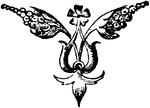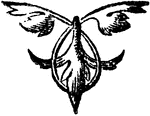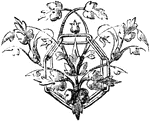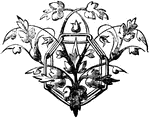
Pallas's Sand Grouse
"Syrrhaptes paradoxus, Sand-Ground, are true desert birds, affording excellent instances of protective…
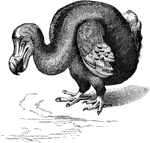
Dodo
"The Dodo, ...was an immense Pigeon-like bird bigger than a Turkey, with an aborted keel to the sternum…
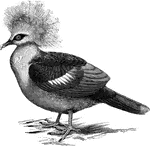
Crowned Pigeon
"Goura coronata, the Crowned Pigeon, discovered by Dampier in 1699, is bluish-slate -coloured, with…
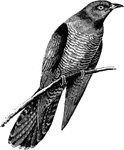
Cuckoo
"Cuculus canorus the familiar Cuckoo of Britain and nearly all the Old World, is greyish-brown above…
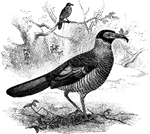
Two Radiated Ground Cuckoo, One with an Insect in its Mouth, the Other in a Tree Branch in a wooded Area
"The plumage is brownish, with white margins to the feathers and a purple tinge on the rufous-mottled…

Cotyledon of a Maple
An illustration of the cotyledon of a maple. A cotyledon is a significant part of the embryo within…

Leadbeater's Cockatoo Sitting on a Tree Branch
"Cacatuo leadbeateri, Leadbeater's Cockatoo, has a red crest banded with yellow and tipped with white,…
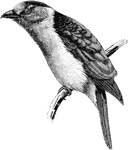
Kirombo
"Leptosoma discolor, the Kiromobo or Vorondreo of Madagascar, and the Comoro Islands, which has a big…
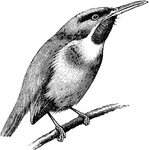
Tody
"Todus viridis, Tody, has coloration that is green, with a red throat, yellowish-white or pinkish under…

Racquet-Tailed Kingfisher
"Tanysiptera, the Racquet-tailed Kingfisher or "Paradise Kingfisher", the sexes may be similar or dissimilar,…
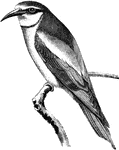
Bee Eater
"Merops Apiaster, the Bee-eater, has ruddy-brown head, neck, upper back, and broad alar bar, buff lower…

Hoopoe
"Upupa epops, not unfrequently visits Britain, where it has nested on several occasions; it breeds from…

Screech Owl
Strix flammea, the nocturnal White Screech-, or Barn Owl, is orange-buff above, with brown, grey and…
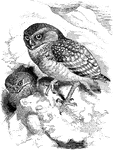
Two Burrowing Owls by the Mountains
"Speotyto cunicularia, the Burrowing Owl, a comparatively long-legged and short -winged bird with incomplete…
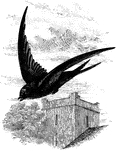
Common Swift Flying Through the Air by a Structure and a Tree with its Mouth Open
"The coloration of the twenty or more species of Cypselus is sooty-black or mouse-brown, frequently…

Long Tailed Hummingbird
"Aithurus polytmus, the Long-tailed Hummingbird, peculiar to Jamaica, the two tail-feathers next to…
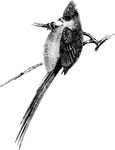
Cape Coly
"Colius capensis, or Cape Coly, has two stripes of black on the back enclosing one of white, the bare…
Quezal
"Pharomacrus mocinno, the Quezal of the higher districts of Guatemala to Veragua, is brilliant iridescent…
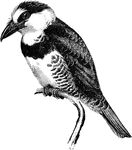
Puff-bird
"Bucco hyperrhynchus, or Puff-bird, is blue-black, with a white under surface crossed by a broad black…
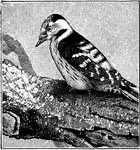
Lesser Spotted Woodpecker
"Dendrocopus minor, or Lesser Spotted Woodpecker, are the British representatives, The colours in this…
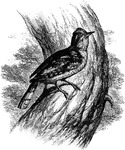
A Wryneck Sitting on a Tree
"Iynx torquilla, the Cuckoo's-mate or Snake-bird, is fairly common in England, and extends thence to…
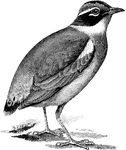
Indian Pitta
"Pitta brachyura, the Indian Pitta, has plumage that exhibits vivid scarlet, blue, and green tints,…
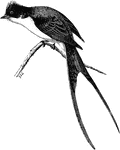
Scissor-tail
"Milvulus tyrannus, Scissor-tail, normally exhibits olive, grey, yellow, or white in varying proportions."…
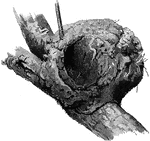
The Nest of an Oven-bird
"The curious nest is placed in exposed situations on branches, in forks of trees or shrubs, on posts,…
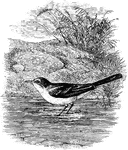
Yellow Wagtail
"Motacilla raii, the Yellow Wagtails, are generally black and white, grey and white, grey with a yellow…
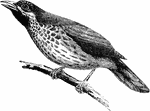
Babbling Thrush
"Timelia maculata, the Babbling Thrush, sexes are commonly alike, the plain rufous coloration being…
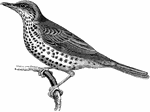
Mistletoe Thrush
"Turdus viscivorus, Mistletoe Thrush, the coloration is ordinarily plain black or brown, more or less…
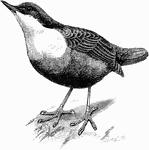
Dipper
"Cinclus aquaticus, Dippers, the colour above is normally greyish-black or brown; the lower parts are…
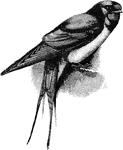
Swallow
"Hirundo rustica, the Swallow, is metallic black, with a variable amount of chestnut or rufous on the…
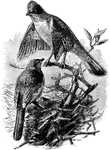
Two Grey "Coly-Shrike" Birds Sitting on Tree Branches
"Hypocolius ampelinus, Grey "Coly-Shrike", the plumage is soft, with characteristically stiff shafts…
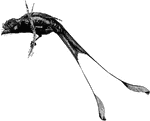
Drongo
"Dissemurus paradiseus, the Drongo, both sexes are typically black, with metallic gloss of blue, purple,…
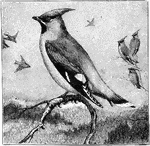
One Waxwing Sitting on a Branch in the Forefront with Three Waxwings Sitting on Branches and Four Flying Around in the Background
"Both sexes of our irregular winter-visitor the Waxwing (Ampelis garrulus) are silky greyish-brown,…
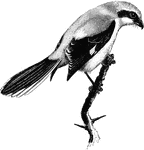
Great Grey Shrike
"The Lanius excubitor, Great Grey Shrike, lax plumage is either black, grey, and white, or is varied…

Nuthatch
"The colours in Sitta caesia, (Nuthatch) which ranges over nearly all the Palaearctic and Indian Regions,…
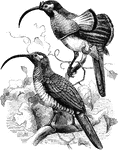
D'Albertis' Bird of Paradise
"Drepanornis albertisi, D'Albertis' Bird of Paradise, is rufous-brown, with green throat and ante-ocular…
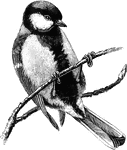
Great Titmouse
"Parus major, the Great Titmouse, are olive, brown, or grey, varied with black, white, chestnut, or…
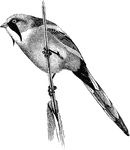
Reed Pheasant
"Panurus biarmicus, the "Bearded Tit" or "Reed-Pheasant" plumage is orange-brown above, with grey crown…
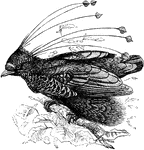
Six-wired Bird of Paradise
"Parotia sexpennis, the Six-wired Bird of Paradise, is bronzy- and purplish-black, having scale-like…
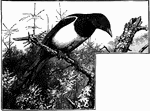
A Magpie Sitting on a Tree Branch Looking Down While Surrounded by Other Trees
"The Pica rustica, or Magpie, extends through the Palaearctic Region, and reaches Formosa and North…
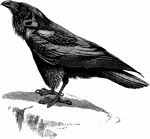
Raven
"Corvus corax, the Raven, are generally black with a purplish or greenish gloss, and frequently with…
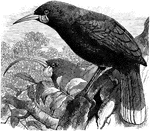
Huia
"Heteralocha acutirostris, the New Zealand Huia, the female has a remarkably long, curved bill, that…
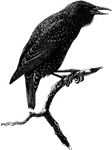
Common Starling
"Our familiar Starling (Sturnus vulgaris) being iridescent black, with buff markings above, and, after…
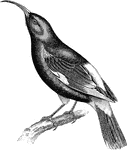
Mamo
"Drepanis pacifica, the Mamo, is black, with golden rump, upper and under tail-coverts, tibiae, and…

Tui
"Prosthemadera novae zealandiae, the Tui, are black and white... two gular patches of curled white filamentary…

Tree Creeper
"Certhia familiaris, the Tree Creeper, the coloration of both sexes is brown, black, rufous, buff, grey,…

Sugarbird
"Certhiola flaveola, the Sugar-bird, coloration varies from black, grey, or purplish, relieved by rufous…
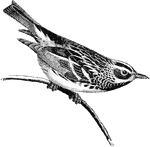
Black and White Warbler
"Mniotilta varia, the Black and White Warbler, The general coloration is olive-green, grey, or slaty-blue,…
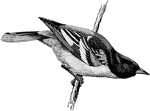
Baltimore Oriole
icterus baltimore, Baltimore Oriole, are glossy black, with yellow, bay, or orange patches-especially…
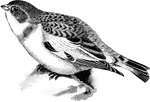
Snow Bunting
" The Snow Bunting (Plectrophenax nivalis), with its black, chestnut, and white plumage, that becomes…
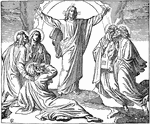
The Transfiguration
"And after six days Jesus taketh Peter, James, and John his brother, and bringeth them up into an high…

Capital Letter D with Floral Motif
Capital letter D designed and accented with a floral motif including flowers, leaves, lines, and shapes…

Annual Spear Grass
Virginia Cut Grass (Leersia Virginica) is a small flowered white grass, and is smoother than white grass…
